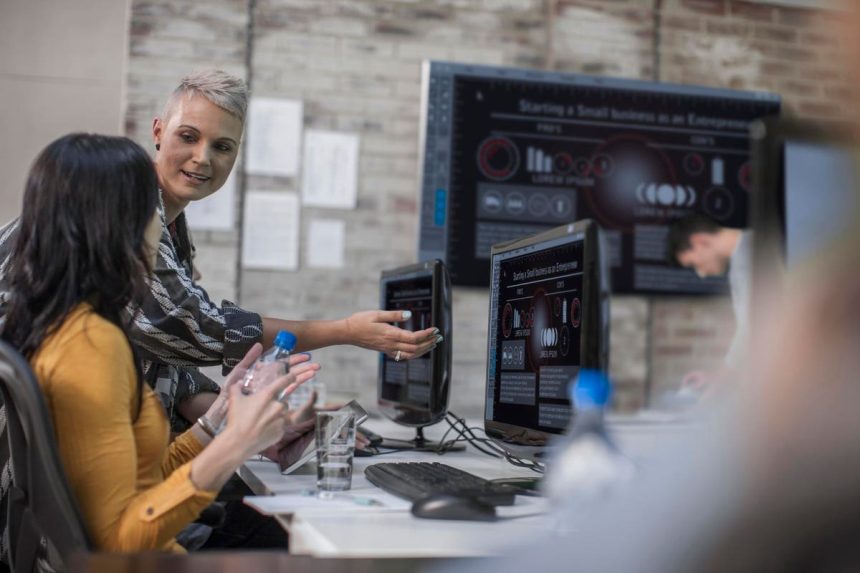Mila Smart Semeshkina is Founder and CEO of Lectera.com, and President of the Women’s Empowerment Council.
In this digital age, access to quality education is no longer a luxury; it’s a fundamental right. The world has witnessed remarkable progress in technology, communication and connectivity, offering unprecedented opportunities for learning and growth.
However, this progress has also revealed stark disparities in educational accessibility across the globe. Even in the United States, there are estimated to be 42 million people without broadband internet access at home.
To address this issue, I believe that businesses and education providers must collaborate to find innovative ways to make learning truly inclusive.
The Digital Divide: A Barrier To Equality
The digital divide is one of the most significant challenges hindering educational accessibility. While many students have access to high-speed internet and modern devices, countless others lack these resources, putting them at a severe disadvantage.
According to a recent EdWeek Research Center survey, the majority of teachers reported that 75% of their students have adequate internet access at home for consistent participation in remote learning. The pandemic has magnified this issue, forcing institutions to transition to online learning and leaving marginalized students behind.
Businesses’ Role In Bridging The Gap
Businesses can play a vital role in promoting educational accessibility by leveraging their resources and expertise. Tech companies, in particular, can contribute by creating affordable devices and providing connectivity solutions for underserved communities.
For instance, Microsoft and the Ministry of Education in Nigeria have partnered to provide a range of digital resources, including laptops and tablets, as well as affordable internet access to schools and students across the country. Initiatives like distributing low-cost mobile devices, mobile data or setting up Wi-Fi zones are great ways to help make sure no student is left behind due to a lack of digital resources.
Your business can also help bridge the gap by updating hiring practices. There are still some businesses that prioritize those who graduate with traditional degrees over online ones, devaluing online education despite the fact that almost all degrees obtained during the pandemic years were online.
Overall, I believe there should be a greater acceptance of online degrees and certificates. I find that businesses that incorporate ongoing education and upskilling into their personnel development programs, especially digitally, are already leading their industries.
Moreover, corporations can enhance their offer of scholarships, grants or mentorship programs to support students from disadvantaged backgrounds. These initiatives not only provide financial aid but also inspire and guide students toward educational aspirations.
Empowering Education Providers To Innovate
Education providers, on the other hand, must adapt and innovate to accommodate diverse learning needs. This involves implementing accessible learning management systems (LMS) that cater to various learning styles, ensuring that content is available in different formats (text, audio, video) and languages. User-friendly interfaces and intuitive design are paramount to creating an inclusive digital learning environment.
Global educational institutions can offer more flexible pricing, making education more accessible to poorer countries. From my own experience, when an interactive learning platform I work with decided to give away some courses in countries such as Indonesia and the Philippines, interest in these courses increased by almost 300%. Many students who studied for free returned to the platform to purchase courses. Everyone can win in this situation.
Furthermore, institutions can invest in teacher training programs that focus on inclusive teaching methods. Teachers armed with tools to accommodate students with disabilities or different learning paces can create classrooms that celebrate diversity and cater to individual needs.
The use of artificial intelligence is also a powerful tool that can greatly enhance the adaptability of any course. For example, AI-driven platforms can help generate content that is specifically tailored to the needs of each student, allowing them to keep up with the pace of the class while still meeting their individual learning requirements.
Collaborative Solutions For A Brighter Future
I believe that stronger partnerships between business and education have the potential to lead to innovative approaches that address unique challenges. For instance, companies can sponsor community learning centers equipped with technology where students can access online resources even if they lack personal devices at home. Such centers can double as hubs for adult education, workforce development and skills training.
Public-private partnerships can also include curriculum development. Businesses can offer insights into the most relevant skills and knowledge in the job market. This helps education providers tailor their offerings to meet current and future demands.
Overall, I think businesses can get more involved, and I encourage business leaders to teach and give lectures more often—and not limit themselves to the most prestigious educational institutions. This alignment can enhance students’ employability and reduce the gap between academia and industry.
In the pursuit of a more equitable world, I believe that enhancing educational accessibility is not just a moral imperative but also a strategic investment. As businesses and education providers join hands, they have the power to break down barriers, eliminate disparities and create a future where everyone has an equal chance to learn, grow and succeed. By prioritizing collaboration, innovation and inclusivity, we can build a society where educational opportunities know no bounds.
Forbes Business Council is the foremost growth and networking organization for business owners and leaders. Do I qualify?
Read the full article here









